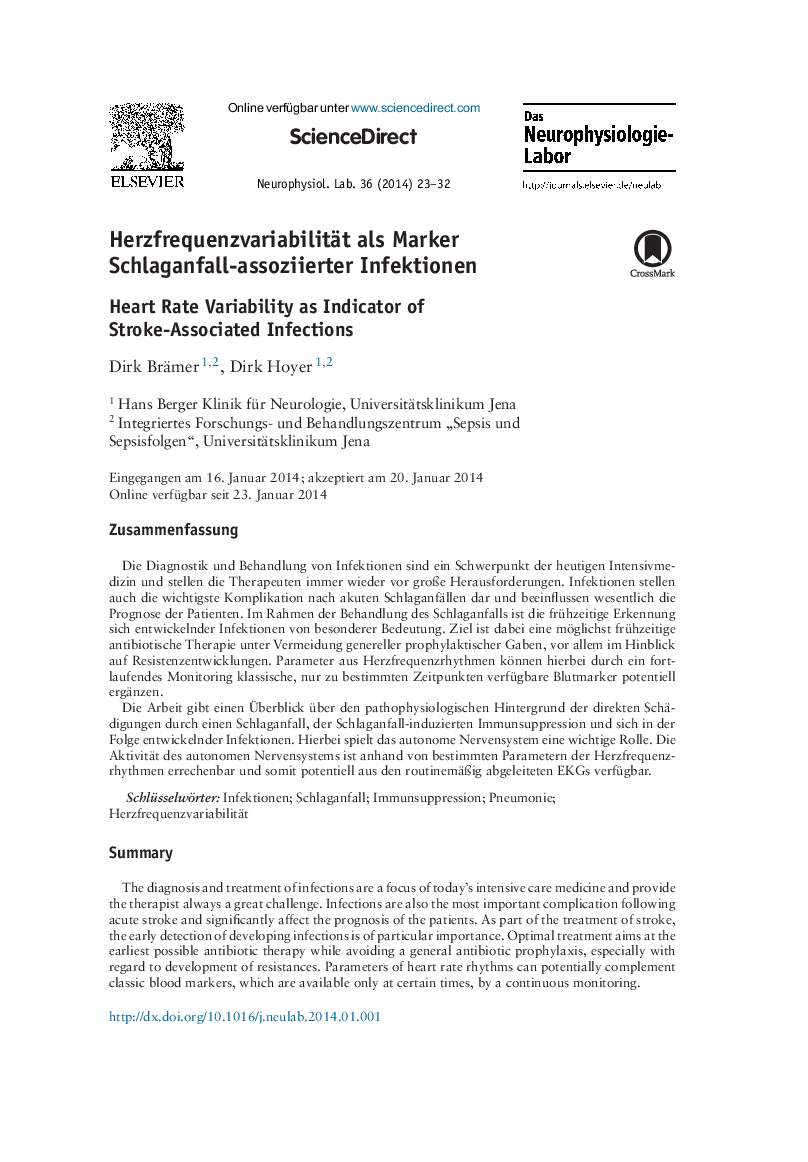| Article ID | Journal | Published Year | Pages | File Type |
|---|---|---|---|---|
| 2684849 | Das Neurophysiologie-Labor | 2014 | 10 Pages |
ZusammenfassungDie Diagnostik und Behandlung von Infektionen sind ein Schwerpunkt der heutigen Intensivmedizin und stellen die Therapeuten immer wieder vor große Herausforderungen. Infektionen stellen auch die wichtigste Komplikation nach akuten Schlaganfällen dar und beeinflussen wesentlich die Prognose der Patienten. Im Rahmen der Behandlung des Schlaganfalls ist die frühzeitige Erkennung sich entwickelnder Infektionen von besonderer Bedeutung. Ziel ist dabei eine möglichst frühzeitige antibiotische Therapie unter Vermeidung genereller prophylaktischer Gaben, vor allem im Hinblick auf Resistenzentwicklungen. Parameter aus Herzfrequenzrhythmen können hierbei durch ein fortlaufendes Monitoring klassische, nur zu bestimmten Zeitpunkten verfügbare Blutmarker potentiell ergänzen.Die Arbeit gibt einen Überblick über den pathophysiologischen Hintergrund der direkten Schädigungen durch einen Schlaganfall, der Schlaganfall-induzierten Immunsuppression und sich in der Folge entwickelnder Infektionen. Hierbei spielt das autonome Nervensystem eine wichtige Rolle. Die Aktivität des autonomen Nervensystems ist anhand von bestimmten Parametern der Herzfrequenzrhythmen errechenbar und somit potentiell aus den routinemäßig abgeleiteten EKGs verfügbar.
SummaryThe diagnosis and treatment of infections are a focus of today's intensive care medicine and provide the therapist always a great challenge. Infections are also the most important complication following acute stroke and significantly affect the prognosis of the patients. As part of the treatment of stroke, the early detection of developing infections is of particular importance. Optimal treatment aims at the earliest possible antibiotic therapy while avoiding a general antibiotic prophylaxis, especially with regard to development of resistances. Parameters of heart rate rhythms can potentially complement classic blood markers, which are available only at certain times, by a continuous monitoring.The paper gives an overview of the pathophysiological background of direct damage caused by a stroke, the stroke-induced immunosuppression and subsequent developing infections. Here, the autonomic nervous system plays an important role. The activity of the autonomic nervous system is calculable from certain parameters of heart rate rhythms and thus potentially available from routinely derived ECGs.
